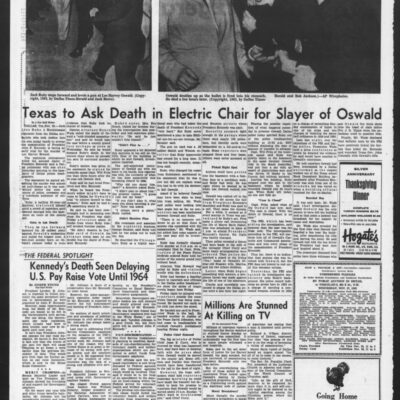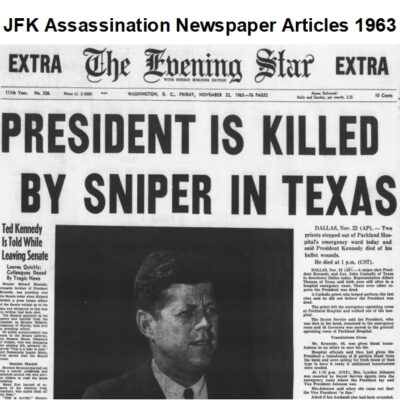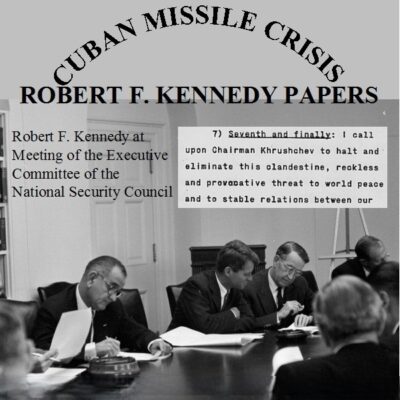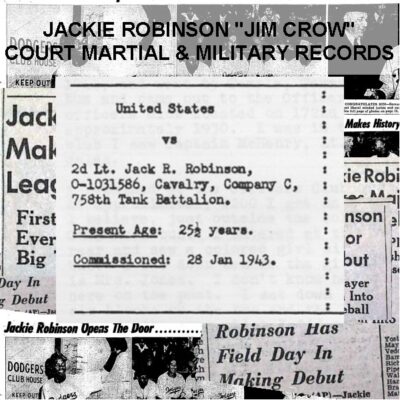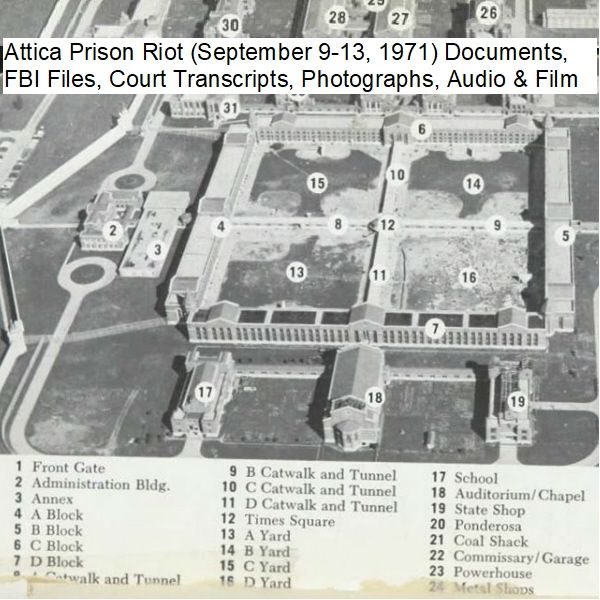
Attica Prison Riot Documents, FBI Files, Court
$19.50
Attica Prison Riot Documents, FBI Files, Court & Hearings Transcripts, Photographs, Audio
Description
The Attica Prison Riot: Timeline and Key Figures
Detailed Timeline of the Attica Prison Riot
August 21, 1971: George Jackson, a black radical activist prisoner, is shot and killed by corrections officers at San Quentin Prison in California. This event is cited as a potential trigger for the Attica uprising.
September 9, 1971:
- The Attica Prison Riot begins. Approximately 1,000 of the roughly 2,200 inmates at the Attica Correctional Facility in Attica, New York, rebel and seize control of the prison.
- The riot is partly based on the prisoners’ demands for better living conditions due to severe overcrowding.
- Forty-three Attica staff members are taken hostage.
September 9-12, 1971:
- Over the next four days, negotiations take place between authorities and the prisoners.
- Authorities agree to many of the prisoners’ demands.
- Two key demands remain unmet: amnesty from criminal prosecution for the prisoners involved in the takeover and the removal of Attica’s superintendent.
September 13, 1971:
- Negotiations break down.
- On the order of New York State Governor Nelson Rockefeller, New York State Police storm the prison to regain control of Attica.
- The assault results in the deaths of 43 people, including ten correctional officers and civilian employees (one fatally injured at the start of the uprising, nine killed by state troopers’ gunfire), and 33 inmates (four subject to vigilante killings by other prisoners, and others by state troopers).
- President Richard Nixon and his Chief of Staff H.R. Haldeman discuss the Attica riot, with Nixon asking if it is a “black business” and comparing it to the Kent State incident, suggesting that violence can deter radical activity. Governor Rockefeller later calls the raid a “beautiful operation” in a conversation with Nixon and agrees that the uprising was led by Black inmates.
October 1971:
- The New York State Special Commission on Attica (McKay Commission) is formed, with Robert B. McKay as Chairman.
April 12 – April 27, 1972:
- The McKay Commission holds hearings in Rochester and New York City, New York.
1974:
- A class action lawsuit, Al Jundi v. Mancusi, is filed on behalf of inmates in D-Yard at Attica, alleging civil rights violations and injuries by law enforcement during and after the retaking of the prison.
- Attorney Elizabeth Fink brings a class action suit on behalf of prisoners alleging abuse by guards.
- Malcolm Bell, a Special Assistant Attorney General working on the Attica investigation, is suspended in December for refusing to name a confidential informant and subsequently resigns, alleging a cover-up to protect Governor Rockefeller.
1975:
- Judge Bernard Meyer releases his report on the Attica investigation (Meyer Report). He concludes there was no intentional cover-up but identifies serious errors in judgment and omissions in evidence gathering.
December 1976:
- New York Governor Hugh Carey announces he is “closing the book on Attica.” He pardons all inmates who had previously pleaded guilty to obtain reduced sentences and commutes the sentences of the two inmates convicted in court. He also dismisses pending disciplinary actions against 20 law enforcement officers.
May – August 2002:
- A task force appointed by Governor George Pataki holds hearings investigating issues raised by The Forgotten Victims of Attica (FVOA), an organization of former hostages and their survivors.
2000:
- The class action suit brought by Elizabeth Fink in 1974 on behalf of prisoners alleging abuse by guards is settled by the State of New York for $12 million.
May 24 – August 28, 2000:
- Trial transcripts cover this period for the Al Jundi v. Mancusi case.
2004:
- The families of the 10 guards who were killed during the Attica uprising receive $12 million.
2013:
- New York Attorney General Eric Schneiderman seeks the release of all three volumes of the Meyer Report.
2015:
- 46 pages of Volumes 2 and 3 of the Meyer Report are released. The remaining portions, including grand jury testimony, remain sealed. The released sections contain disturbing accounts from a National Guardsman and a physician regarding the treatment of wounded inmates.
Cast of Characters
- George Jackson: A black radical activist prisoner at San Quentin Prison in California. His death in August 1971 is believed to have contributed to the tensions leading to the Attica riot.
- The Inmates of Attica Correctional Facility: Approximately 1,000 of the 2,200 inmates participated in the rebellion, driven by demands for better living conditions and triggered by events like Jackson’s death. Their collective action was a central event.
- The Hostages: Forty-three staff members of the Attica Correctional Facility were taken hostage during the four-day uprising. Their fate was a key concern during the negotiations and the subsequent assault.
- Nelson Rockefeller: Governor of New York State at the time of the Attica Prison Riot. He ultimately made the decision to order the State Police to storm the prison to regain control. His actions and lack of visit to the prison before the assault were later criticized by the McKay Commission.
- Robert B. McKay: Dean of the New York University School of Law and Chairman of the New York State Special Commission on Attica (McKay Commission). His commission conducted hearings and produced an official report critical of the state’s handling of the uprising.
- Elizabeth Fink (1945-2015): A civil rights and defense attorney, described as a radical lawyer. She is best known for representing prisoners incarcerated at Attica after the riot. She brought a class action suit on their behalf that was settled in 2000 and collected photographs documenting the aftermath of the raid for use in lawsuits.
- Hugh Carey: Governor of New York State who, in December 1976, announced he was “closing the book on Attica” by pardoning inmates and commuting sentences.
- George Pataki: Governor of New York State who appointed a task force in the early 2000s to investigate issues raised by the former hostages and their survivors.
- The Forgotten Victims of Attica (FVOA): An organization composed of former hostages taken during the Attica uprising and their survivors. They advocated for recognition and investigation into their experiences.
- Bernard Meyer: A judge who conducted a special investigation into the Attica riot and produced the Meyer Report in 1975, which found errors in judgment but no intentional cover-up.
- Malcolm Bell: A Special Assistant Attorney General who worked on the Attica investigation but resigned in 1974, alleging a cover-up to protect Governor Rockefeller.
- Louis Lefkowitz: The Attorney General of New York State at the time of Malcolm Bell’s resignation, whom Bell accused of engaging in a cover-up.
- Eric Schneiderman: New York Attorney General who sought the release of the full Meyer Report in 2013.
- James Watson: A National Guardsman who witnessed and reported on the mistreatment of wounded inmates after the prison was retaken, as revealed in the partially released Meyer Report.
- Robert Jenks: A staff physician at a nearby hospital who reported seeing evidence of inmate abuse not caused by gunfire and the denial of necessary medical treatment, as revealed in the partially released Meyer Report.
- AKIL AL-JUNDI: The lead plaintiff in the class action lawsuit Al Jundi v. Mancusi, representing inmates in D-Yard who claimed they were injured by law enforcement during and after the retaking of Attica.
- Vincent Mancusi: One of the defendants named in the Al Jundi v. Mancusi lawsuit, likely representing the prison administration or state authorities.
- Richard Nixon: President of the United States during the Attica Prison Riot. His secret White House recordings reveal his discussions about the event, including racial undertones and comparisons to the Kent State shooting.
- H. R. “Bob” Haldeman: Richard Nixon’s Chief of Staff, who is heard discussing the Attica riot with the President in the secret recordings.
- Angela Davis: A radical political activist mentioned by Nixon in connection with the Attica uprising, suggesting he believed the riot was linked to broader radical movements.
Attica Prison Riot Documents, FBI Files, Court & Hearings Transcripts, Photographs, Audio
11,708 pages of Attica Prison Riot Documents, FBI Files, Court Transcripts, Photographs. 16 hours and 37 minutes of audio recordings and 10 minutes of video of Attica taken at the beginning of the end of the riot.
The Attica prison riot (also known as the Attica Prison uprising and the Attica Prison rebellion) began on September 9, 1971, when about 1,000 of the approximately 2,200 inmates in the Attica Correctional Facility, in Attica NY rebelled and seized control of the prison. The riot was based in part upon prisoners’ demands for better living conditions, Attica was severely overcrowded at the time, but may also have been triggered in part by a recent incident at San Quentin Prison in California, where George Jackson, a black radical activist prisoner, was shot to death by corrections officers on August 21.
Forty-three Attica staff members were taken hostage during the riot. During the following four days, authorities agreed to many of the prisoners’ demands, but there were two points on which they would not concede: amnesty from criminal prosecution for the prisoners involved in the takeover, and the removal of Attica’s superintendent. As negotiations broke down New York State Police, on the order of Governor Nelson Rockefeller, stormed the prison and regained control of Attica.
When the uprising was over, 43 people were dead, including ten correctional officers and civilian employees. The final death toll from the uprising includes one officer fatally injured at the start of the uprising and four inmates who were subject to vigilante killings by other prisoners. Nine hostages died from gunfire by state troopers. The New York State Special Commission on Attica wrote, “With the exception of Indian massacres in the late 19th century, the State Police assault which ended the four-day prison uprising was the bloodiest one-day encounter between Americans since the Civil War.”
In December 1976, New York Governor Carey announced he was “closing the book on Attica,” and pardoned all inmates who had previously pleaded guilty to obtain reduced sentences and commuted the sentences of the two inmates convicted in court. He additionally dismissed pending disciplinary actions against 20 law enforcement officers related to the uprising. He characterized the Attica prosecution as “the darkest day in the history of New York State’s jurisprudence.”
FBI Files
1,327 pages of FBI files covering the Attica Riot.
Contains initial reports of the riot. Reports on demonstrations, arson and vandalism taking place around the cluntry in protest of the actions against the inmates of Attica. Interviews with members of the Goldman panel, present and former Attica inmates, members of medical personnel, state troopers and guards.
New York State Special Commission on Attica (McKay Commission) Hearings Transcripts and Audio Recordings
3,222 pages of transcripts of McKay Commission hearings and 16 hours and 7 minutes of audio recordings of the Rochester hearings. In October 1971 the New York State Special Commission on Attica was formed with Robert B. McKay, Dean of the New York University School of Law, as Chairman of the Commission. The Commission held hearings in Rochester and New York City, NY from April 12, 1972 to April 27, 1972.
After dozens of hearings, McKay and his fellow commissioners’ findings included criticisms of the New York State prison authorities and Governor Nelson A. Rockefeller. They cited poor planning by prison officials and their quick embrace of lethal methods to subdue rebelling prisoners. They also criticized Governor Rockefeller for not visiting the prison before ordering the counterassault on the prison.
Photographs Taken During and After the Raid to Retake Attica
190 photos taken during and after the assault team ended the riot. Photographs collected in the years following by attorney Elizabeth Fink (1945-2015) for use in lawsuits in which she represented Attica prisoners. Fink, a civil rights and defense attorney, was often described as a radical lawyer. Best known for representing prisoners incarcerated at Attica in 1971.
A class action suit Fink brought in 1974 on behalf of prisoners alleging abuse by guards was settled by the State of New York in 2000 for $12 million. The photographs are very graphic and uncensored documenting the deaths of hostages and prisoners, and activities in the prison after the putting down of the uprising, they include autopsy and morgue photographs used as photographic evidence. The captions and titles of the photographs were chosen by Fink, for example “Attica Brothers” refers to Attica inmates.
The Forgotten Survivors Hearings Testimony Transcriptions
990 pages of transcripts. This series consists of transcribed testimony of former hostages taken in the uprising at Attica Correctional Facility in September 1971. The testimony was given between May and August 2002 before a task force appointed by Governor George Pataki, which was charged with investigating issues raised by The Forgotten Victims of Attica (FVOA), an organization composed of former hostages and their survivors; and to make recommendations based on the task force’s findings. The hearing lead to the families of the 10 guards who were killed to receive 12 million dollars in 2004.
New York State Special Commission on Attica Official Report (McKay Report)
A 574-page copy of “Attica: The Official Report of the New York State Special Commission on Attica.” The McKay Commission, which provided the official report on the events at Attica, commented that “with the exception of Indian massacres in the late 19th century, the state police assault which ended the four-day prison uprising was the bloodiest one-day encounter between Americans since the Civil War.”
Final Report of the Special Attica Investigation Volumes 1 (released in full), 2,3 (Partial Releases) (1975)
A 1975 report by Judge Bernard Meyer better known as the Meyer Report.
On December 6, 1974, Malcolm Bell, who had served the Attica investigation since September 1973, as a Special Assistant Attorney General, was suspended by Anthony G. Simonetti, the Special Assistant Attorney General then in charge of the investigation. The reason for the suspension was Bell’s refusal to give Simonetti the name of a confidential informant. On December 11, 1974, Bell resigned, explaining in a four-page letter addressed to Attorney General Lefkowitz that in his opinion the investigation as conducted by Simonetti “lacks integrity.”
Bell later reported to governor-elect Carey that he had built grand jury cases toward indicting a half-dozen state troopers for murder or manslaughter, 60 or 70 for reckless endangerment, and several ranking officers for what he believed was a cover-up. He claimed that Louis Lefkowitz, the attorney general at the time, was engaging in a cover-up to protect Governor Nelson Rockefeller, who had ordered the prison retaken.
Judge Meyer concluded there was no intentional cover-up, only serious errors in judgment and omissions in evidence gathered by troopers. In 2013, New York Attorney General Eric Schneiderman sought release of all three volumes of the Meyer 570-page report on the Attica prison riot. In 2015, 46 pages of Volumes 2 and 3 were released. The rest of the report’s Volume 2 and 3, including 350 pages of grand jury testimony is still sealed.
Within the more recently 46 pages released Meyer wrote, “A National Guardsman who treated wounded inmates only to have bandages ripped off, saw stretchers deliberately tilted, saw guards beat inmates on medical carts with clubs, saw a prison doctor pull an inmate off a cart and kick him in the stomach, saw inmates beaten while running a gauntlet,” Meyer wrote. This portion of volumes 2 and 3 reveal information given by National Guardsman James Watson and physician Robert Jenks.
Watson said he saw inmates beaten on stretchers, “poked in the groin and rectum with nightsticks, [and] beaten while running through gauntlets”. Watson said on one occasion he saw an inmate beaten by seven prison officers.
Jenks, a staff physician at a nearby hospital, reported seeing “an inmate with large wounds around his rectum which were not from gunshot and which, he later heard, had been caused by a broken bottle.” Jenks said he was refused permission to evacuate “an inmate who had suffered severe brain damage” and saw people with untreated fractures and some who had not received needed blood transfusions.
Al Jundi v. Mancusi Trial Transcripts
1,961 pages of trial transcripts and judge’s decisions and orders in the case of AKIL AL-JUNDI, on behalf of himself and all others similarly situated, Plaintiffs, v. VINCENT MANCUSI, et al, Defendants. (Transcript for May 24, 2000 to August 28, 2000).
Filed in 1974. A class action by inmates in D-Yard at the Attica Correctional Facility on September 13, 1971. They brought this action seeking damages for civil rights violations, claiming that they were injured by law enforcement officers during and after the retaking of Attica on September 13, 1971, which ended a four-day riot. Almost 26 years later the State of New Yok agreed to a settlement without admitting liability. The State agreed to pay $8 million to the plaintiffs and $4 million to the plaintiff’s lawyers.
New York State Police Surveillance Video of Attica
10:06 of video from multiple cameras recorded by the New York State Police. The NYSP set up video cameras to peer into Attica to aid in its planning for re-taking the prison. This video documents the Attica prison riot right before the state police stormed the prison and at the very beginning of the assault. The narrator describes the activity in the various sectors of the prison. The video provides a glimpse into the ways the prisoners organized their activities. Shows the area where the hostages were being held. Also shows at a distance a meeting taking place among the prisoners. The 1971 video tape is of low quality but audio of the State Police real time narration of the events on the video is clear.
Richard Nixon Secret White House Recordings Mentioning the Attica Riot
Four segments of Nixon White House Tapes totaling 16 minutes and 31 seconds, recorded on September 13, 1971, the day New State Police and members of the New York National Guard regained control of Attica from rebelling prisoners.
H. R. “Bob” Haldeman, Nixon’s chief of staff, tells Nixon of the assault on the prison. Nixon asks Haldeman, “Is this a black business?” Haldeman “Yes sir,” “We have got to be tough on this,” Nixon says. “You know what this is? This is the Angela Davis crowd,” soon after Nixon further remarks, “these are the negroes.” “Which concerns me,” Haldeman interjects, “The word is around now that this is the signal for the black uprising… It’s clear this is what they’re doing,” continued Haldeman. “The revolution thing is moving to the prisons now, versus the campuses where they couldn’t get enough action on.”
Later, Nixon calls Governor Rockefeller, who calls the raid “a beautiful operation.” “Tell me, is this—are these primarily blacks that you’re dealing with?” asks Nixon. “Oh yes,” responds Rockefeller, “the whole thing was led by the blacks.”
Later Nixon speaking to Haldeman compares Attica to the Kent State Incident which occurred on May 4, 1970. Nixon: “This might have one hell of a salutary effect. They can talk all they want about the radicals. You know what stops them? Kill a few.” “Remember Kent State?” Nixon continues. “Didn’t it have one hell of an effect, the Kent State thing?” “Sure did,” replies Haldeman. “Gave them second thoughts.”
Nixon and Haldeman further discuss Attica. Haldeman asks, “Were they all black?” “Everyone,” responds Nixon. Haldeman concedes, “They’ve probably got some legitimate grievances—I’m sure they do,” He then reverses course, “My guess is, looking at it, that it has nothing to do with anything legitimate; it has to do with the revolution.” Nixon weighs in, “We’ve got to be tough.” “This whole business of permissiveness on campus,” concludes Nixon, “why not permissiveness in prison, permissiveness to the blacks? It’s not—we’re not going to turn around here in this town. If they hit this town again (Washington D.C.), we’ve got to be tough.”
The Hidden Society – Annual Report – Senate Committee on Crime and Correction, 1970
A January 15, 1971 State of New York Senate Committee on Crime and Correction report on problems in the correctional facilities in New York including Attica.














